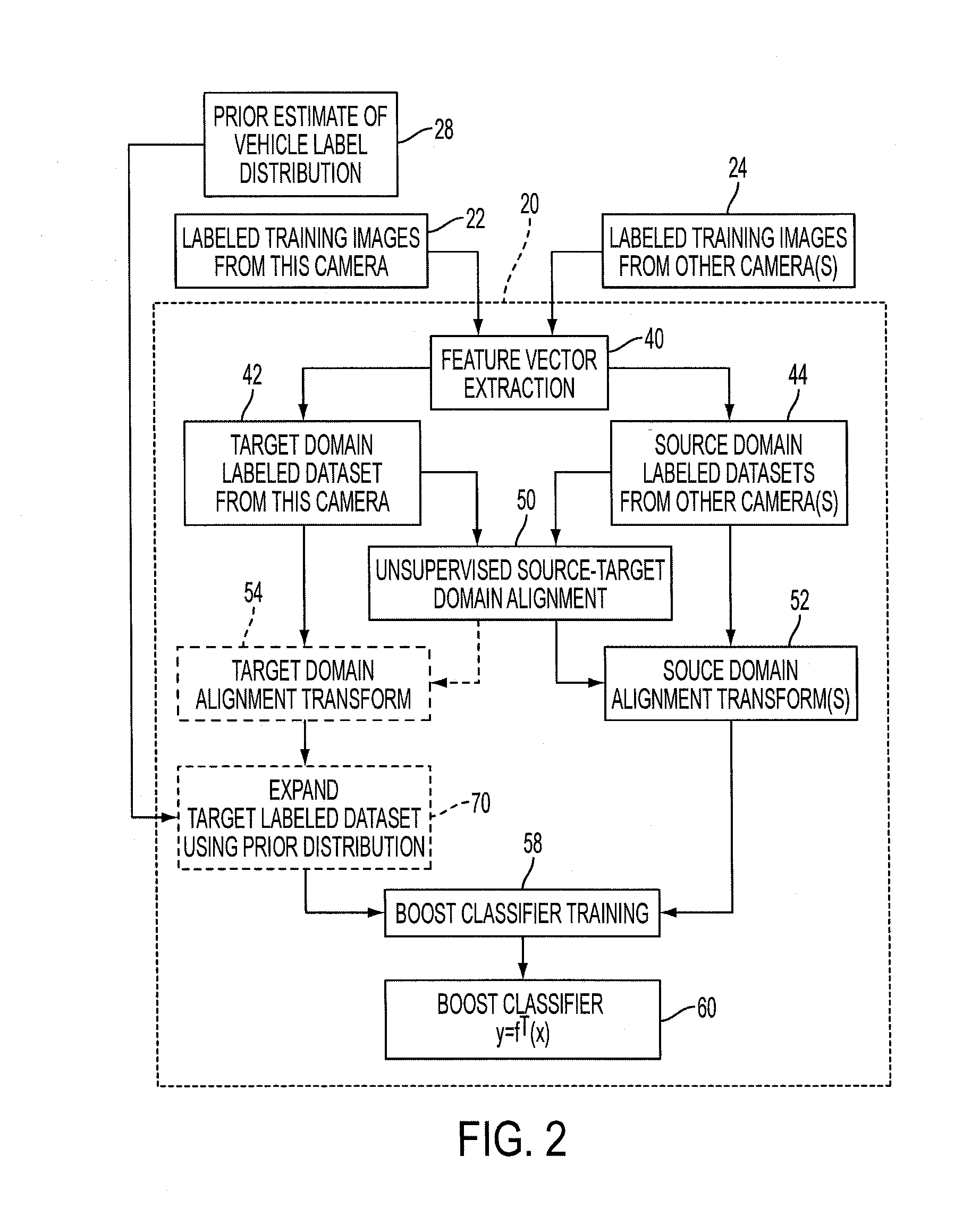Domain adaptation for image classification with class priors
a domain adaptation and image technology, applied in the field of image labeling arts and camera-based object labeling arts, can solve the problems of inability to leverage information that may have been collected from earlier-installed cameras, inability to train each camera independently, and similar difficulties
- Summary
- Abstract
- Description
- Claims
- Application Information
AI Technical Summary
Benefits of technology
Problems solved by technology
Method used
Image
Examples
Embodiment Construction
[0016]The following relates to image labeling systems and to camera-based object labeling systems. As used herein, the term “object” refers to an inanimate object (or group of inanimate objects) or an animate object (such as a person or group of people, or an animal or group of animals). As used herein, the term “object” refers to a physical object that can be imaged by the camera used in the labeling system. By way of some non-limiting examples, an inanimate object of interest may be a vehicle (which is the illustrative application herein), an article of manufacture, contents of a piece of luggage or transport bin being scanned by an airport security system, or so forth. The set of labels applied by the labeling system can be set of labels for the image generally (in the case of an image labeling system) or a set of labels for the object. By way of illustrative example, the set of labels a vehicle may be a set of vehicle types (passenger car, small truck, large truck, bus, et ceter...
PUM
 Login to View More
Login to View More Abstract
Description
Claims
Application Information
 Login to View More
Login to View More - R&D
- Intellectual Property
- Life Sciences
- Materials
- Tech Scout
- Unparalleled Data Quality
- Higher Quality Content
- 60% Fewer Hallucinations
Browse by: Latest US Patents, China's latest patents, Technical Efficacy Thesaurus, Application Domain, Technology Topic, Popular Technical Reports.
© 2025 PatSnap. All rights reserved.Legal|Privacy policy|Modern Slavery Act Transparency Statement|Sitemap|About US| Contact US: help@patsnap.com



